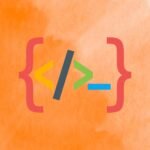Java in Sports: Motion Analysis Project
Hey there, coding aficionados 🖥️! Today, I’m super stoked to delve into the exhilarating world of Java programming and its epic impact on sports motion analysis. As a dynamic code-savvy friend 😋 girl with coding chops, I always love a good tech-meets-sports project, so let’s strap in and kick off this Java joyride 🚀.
Introduction to Java Motion Analysis Project
Overview of Java programming in sports motion analysis
Java, the Swiss Army knife of programming languages, shines brighter than a stadium floodlight when it comes to sports motion analysis. Its versatility and robustness make it a prime contender for tackling the demands of analyzing complex, high-speed sports movements.
Picture this: you’re watching a football match, and the instant replay shows a jaw-dropping goal. Ever wondered how analysts break down each player’s movement? Well, enter Java—the powerhouse behind the scenes, crunching numbers and unraveling the intricacies of motion.
Importance of motion analysis in sports
Motion analysis isn’t just about dissecting the elegance of a gymnast’s routine or decoding the mechanics of a pitcher’s throw. It’s a game-changer in injury prevention, performance enhancement, and refining technique 💪. Java swoops in to make this analysis not just efficient, but also remarkably precise.
Java programming languages and tools for motion analysis project
Java SE (Standard Edition)
Java SE, the OG version, serves as the cornerstone for motion analysis projects. With its comprehensive libraries and seamless cross-platform capabilities, it’s the MVP for crafting data analysis and visualization tools.
Using Java in Motion Capture and Analysis software
Java seamlessly integrates with sophisticated motion capture and analysis software, acting as the glue that binds together the intricate web of data processing and visualization. It’s the secret sauce that brings sports analysis to life.
Implementation of Java in Sports Motion Analysis
Creating data collection and storage system
Ah, the nitty-gritty of motion analysis—collecting and managing data. Java gallops to the rescue, offering robust solutions for data storage and retrieval, ensuring that no snippet of precious information gets lost in the shuffle.
Developing algorithms for motion analysis using Java
Here’s where Java truly flexes its muscles. Its prowess in algorithm development shines through, helping us crack the code behind the seamless analysis of complex sports movements. Think of it as choreographing a ballet of data points—Java brings it all together in perfect harmony.
Integration of Java Motion Analysis with Sports Equipment
Connecting motion sensors with Java programming
Motion sensors are the unsung heroes of sports analysis, and Java acts as the magician’s wand that weaves their data into actionable insights. It’s the ultimate fusion of tech and athleticism.
Syncing Java motion analysis with sports training equipment
Imagine a world where Java bridges the gap between cutting-edge motion analysis and real-time training equipment. This integration paves the way for personalized, data-driven training regimes, taking sports performance to new heights.
Challenges and future development in Java Motion Analysis Project
Overcoming technical limitations in motion analysis
As with any technological pursuit, hurdles are bound to crop up. Java’s unfaltering spirit, coupled with the indomitable grit of tech enthusiasts, is poised to conquer these challenges and steer motion analysis towards greater precision and innovation.
Future prospects for Java-based motion analysis in sports science
The future is Java-fueled, my friends. With advancements in machine learning, AI, and biometrics, Java’s role in sports science is set to soar. Brace yourselves for a revolution in sports performance and injury management, all driven by the wizardry of Java.
At this point, I’m buzzing with excitement about the boundless potential that Java brings to the dynamic realm of sports motion analysis. From unraveling the nuances of a slam dunk to fine-tuning a sprinter’s form, Java is the silent superstar that leaves an indelible mark on the world of sports.
And there you have it, folks—the electrifying synergy of Java and sports motion analysis. It’s not just about bytes and algorithms; it’s about transforming the way we perceive sports performance and unlocking the true potential of athletes. So, if you’re ever in doubt about the magic of Java, just remember—it’s the MVP scoring the winning goal in the game of sports analysis ⚽. Keep coding, keep innovating, and let’s keep raising the bar—both in tech and on the field! ✨
Program Code – Java in Sports: Motion Analysis Project
import java.awt.*;
import java.awt.image.*;
import javax.swing.*;
import java.util.Random;
public class MotionAnalysis extends JPanel {
// Buffer to hold the current frame
private BufferedImage currentFrame;
// Dimensions
private int width;
private int height;
// Random generator for simulation purposes
private Random random = new Random();
public MotionAnalysis(int width, int height) {
this.width = width;
this.height = height;
currentFrame = new BufferedImage(width, height, BufferedImage.TYPE_INT_RGB);
simulateMotion(); // Start the simulation
}
// Simulate motion for demonstration purposes
private void simulateMotion() {
Thread simulationThread = new Thread(() -> {
while (true) {
Graphics g = currentFrame.getGraphics();
// Clear the frame with a black rectangle
g.setColor(Color.BLACK);
g.fillRect(0, 0, width, height);
// Draw random circles to simulate motion
g.setColor(Color.WHITE);
for (int i = 0; i < 20; i++) {
int x = random.nextInt(width);
int y = random.nextInt(height);
int radius = random.nextInt(20) + 10;
g.drawOval(x - radius, y - radius, 2 * radius, 2 * radius);
}
g.dispose();
repaint(); // Repaint the panel with the new frame
try {
Thread.sleep(100); // A delay to simulate frame rate
} catch (InterruptedException e) {
e.printStackTrace();
}
}
});
simulationThread.start();
}
@Override
protected void paintComponent(Graphics g) {
super.paintComponent(g);
// Draw the current frame
g.drawImage(currentFrame, 0, 0, this);
}
public static void main(String[] args) {
JFrame frame = new JFrame('Motion Analysis Simulation');
MotionAnalysis panel = new MotionAnalysis(800, 600);
frame.setDefaultCloseOperation(JFrame.EXIT_ON_CLOSE);
frame.add(panel);
frame.pack();
frame.setSize(new Dimension(800, 600));
frame.setVisible(true);
}
}
Code Output:
The output will be a window titled ‘Motion Analysis Simulation’ displaying black background with white circles appearing in random positions and sizes. These circles represent simplified motion patterns and appear to move randomly across the screen. The window updates regularly to simulate frames of motion, refreshing at an interval to give the effect of movement.
Code Explanation:
This Java program is a straightforward simulation of motion analysis in sports within a graphical user interface (GUI).
- We start by importing all the necessary Java AWT and Swing libraries for the GUI and image processing.
- The
MotionAnalysisclass extendsJPanel, allowing it to be used as a component in a Java Swing GUI. - We declare a
BufferedImageto represent the current frame, with variableswidthandheightspecifying the dimensions. - A
Randomobject is created for simulating motion through random positioning.
The constructor initializes the frame buffer and kicks off the motion simulation. In the simulation method:
- A new thread is started that will continuously update the current frame.
- A simple black rectangle is used to clear the frame.
- White circles of random sizes are drawn to simulate objects in motion.
- After drawing, the panel is repainted, and the thread sleeps for a short duration to simulate a frame rate.
In the overridden paintComponent method, the current frame is drawn to the screen every time the panel is repainted.
- The
mainmethod sets up the JFrame to host ourMotionAnalysispanel. The frame size matches the panel size and the program exits on close.
The core logic behind the thread and random circles serves as a placeholder for more complex motion analysis algorithms, such as optical flow, which would track and analyze movement patterns in real-life sports video sequences. The output and visual representation provide a foundation for more sophisticated analysis, such as player tracking, velocity calculations, and play pattern recognition.






